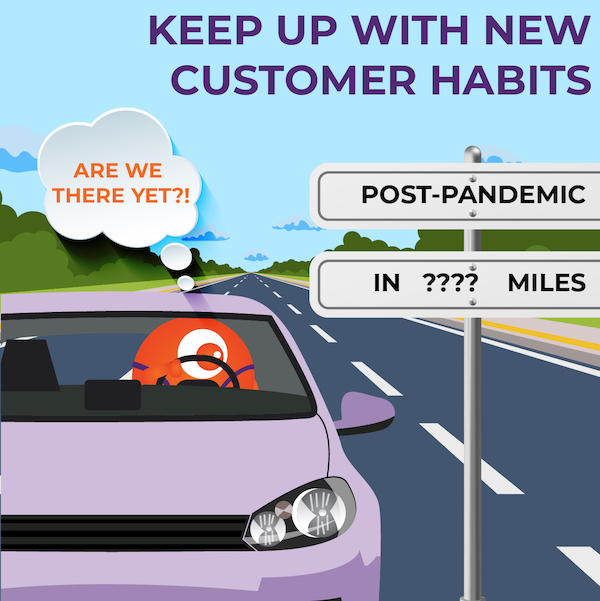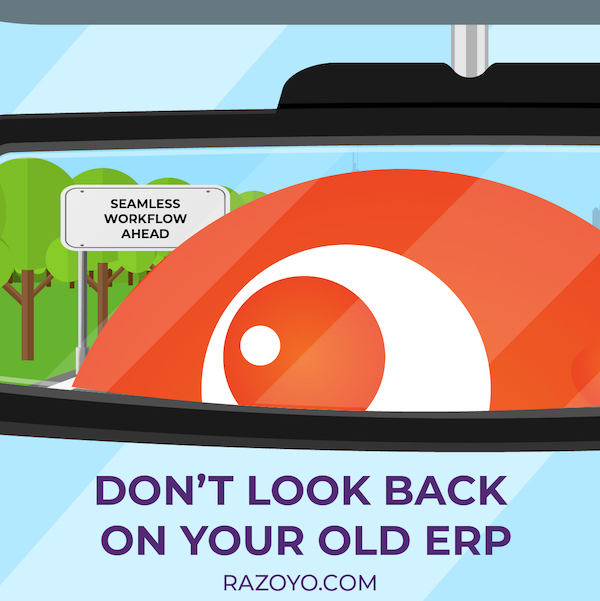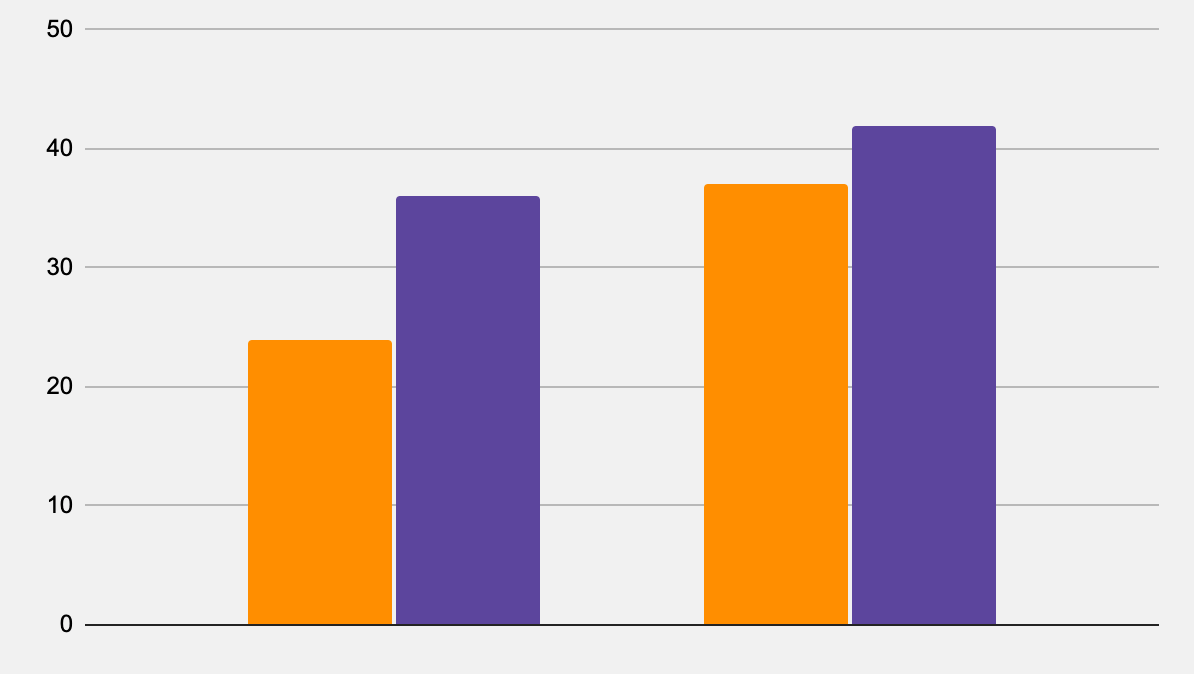
2026: When Your AI Overlords Take Over Shopping – Squinting Through My Crystal Ball


July 23, 2021 by Paul Byrne
Ecommerce is everywhere and if you can’t keep up with the ever changing operations, your business will suffer the consequences. Commerce is continuing to change the user experience and transactions from being completely customized and in-person to being fully automated and online. More and more organizations we work with have completely blurred the boundaries between the in-person experience and the online atmosphere.
So how do online merchants keep up?

There’s no question that the constant consumer demand for a fully customized and instantaneous experience is a horrific thought to most merchants. The need for key features that were once only available via seemingly expensive ERP systems has exploded since the beginning of the COVID-19 pandemic. Merchants need these automated features NOW if they want to keep their business afloat for current and post-pandemic purchase preferences.
Automated features Merchants should take note of:
The acronym stands for Enterprise Resource Planning systems.
Although ERP’s are everywhere now, I first learned about them in graduate school in the early 90’s. At the time ERP’s were relatively new and it was an easier way to access and control systems from the dreaded ‘mainframe’ computer.
When they were introduced, ERPs were supposed to be the end-all-be-all solution for large organizations to automate and organize some of their more intricate and complicated operations. An organization with a custom ERP system would be able to improve their efficiency and productivity… and therefore profits as a result.
Same story, different decade…
A DOP is a Digital Operations Platform, a solution used to unify and centralize all data-streams related to back-office operations. With a DOP all data-streams that were once separate are now all communicating with each other seamlessly to create even more efficiency throughout the business as well as power better customer and employee experiences.
Similar to an ERP, a DOP becomes the main hub for crucial operations such as order management, supply chain management, customer management, and more. However, DOPs are specifically streamlined to manage the collaboration and feedback of agile teams across departments and drive traceable results.
In modern business, operational systems need to be flexible to adapt to changes in the commerce landscape. For example, the global pandemic that no one was expecting.
Businesses must be able to easily change key operational processes, scale up as sales volumes become higher, add new sales channels, and even change workflows accordingly.
Commerce in the eyes of consumers is moving so quickly, that merchants need to keep up to continue to accommodate and stay relevant with their operational processes, such as multichannel order management, inventory management and warehouse management, ERPs need to be able to connect to other systems (OMS, WMS, CRM, and more).
Most ERPs can handle portions and pieces of the metaphorical puzzle, (but don’t seem to have the picture to complete it). Unfortunately, businesses find out the hard way that existing ERP’s need constant updates and customizations to keep all of the pieces in alignment, which costs a lot of time and money.
A DOPs purpose is to bring together all types of data streams, whether from sales channels, warehouse management system, product information system, or customer relationship management. It supports any workflow with these data-streams, unifying them and allowing communication between them to support any operation, no matter the complexity. Once all data-streams are managed in this one centralized platform, they can easily be adapted and amended to transform with your business.
Scaling your business with a DOP is easy. In contrast to ERPs, its technology is designed to support high volumes of data, including orders and inventory movements. Also, adding new sales channels or third-party software is easy, they can be added to existing workflows or be configured on the go.
We’re not saying that replacing a legacy ERP is easy, but replacing a legacy ERP with another ERP, however, is a downright nightmare!
By default, an ERP is embedded in many different parts of your business operations. Often custom connections are made between systems, custom workflows are used, and different departments use the ERP in different ways. And unfortunately, even a new ERP will not inherently support all these needs out-of-the-box.
As a result, before switching to a new ERP system, a lot of time needs to go into creating new custom features, testing whether workflows are correctly configured, educating many different users at once on how to use the new ERP, and similar costs quickly snowball into a new ERP that is just as costly and inefficient.

A DOP can be introduced gradually, combining and unifying data streams, but not all data streams need to be implemented from the start. When installing a DOP, it is important to connect all of the data and crucial systems first so that the main operations can be functional while new components can be added later on in the processes.
When transitioning, DOP’s can work with your preceding ERP to correctly set up the next steps. Moving forward, efficiency will be higher when reviewing project time, costs and staff education.

Many ERPs are unsuited to integrate with third-party softwares that many online merchants need, especially from workflows such as order management systems, warehouse management systems, customer relationship management, or business intelligence. The necessary operations can only be further added by manually transferring the data between systems.
When it comes to operational management, transferring data manually can be an exhausting waste of time that is highly prone to human errors. Almost half of all businesses still use spreadsheets to transfer and analyze data that has been pulled from ERP systems manually. These manual errors almost always lead to inaccurate data being dispersed throughout independent teams across the company, which leads to major miscommunications over time.
DOP systems make sure that all of the data streams are unified and available for constant automation. Data can be used to set up any operational workflow that’s possible with this commerce data. It’s a game changer for merchants to put manual data transfers in the past where they belong, along with all the other issues that come along with them!
With a DOP system, individuals, teams, and departments can then access any type of data they need to improve operational processes without misrepresenting the data.
Companies have had issues because ERP’s are not suitably built for merchants and commerce operations. This can be particularly problematic since commerce asks for specific features, functions, and operations due to supply and demand within different sales and locations.
Commerce Operational Features not supported by ERP’s:
Buy online and pick up in-store
Split shipments
Drop shipment
Inventory balancing
Subscriptions

When important (and much needed) commerce features cannot be processed by the ERP, they need to be developed and patched to fit current needs, or switch to another operating system altogether. Either way, ERP’s are constantly putting merchants in a messy and expensive situation.
Marello DOP is a digital operations platform that is built for commerce specifically. It supports all processes needed for great commerce experiences. With a DOP you can install any workflow you want, for any type of commerce operation.
Some examples of seamless workflow with Marello DOP:
There are many more examples in which a DOP offers commerce features out-of-the-box that would not be possible with an ERP.
First, as mentioned above, ERPs cope with many organizational problems, just as a DOP does, the upside to switching is that DOPs have not inherited such problems and they can work side by side with ERPs to maintain all of your business processes. DOPs are a great alternative to ERPs if your company is ready for a full update to an existing ERP, but they can also be a great companion for the current ERP if it is just time to upgrade commerce functions and features.
Second, it is important to note that DOPs and ERPs do not offer the same features. Although DOPs can add the missing pieces that ERPs have, the two systems can work together due to flexible architecture (best of breed approach).
Completely switching from an ERP to a DOP can be favorable for saving time and money, but it may not be a doable swap at just any given time. While working towards an upgrade, take into consideration using the two softwares as a combined unit until it is a viable option to effectively transfer everything over to the new system.
If you have any questions, comments or concerns, please contact us here, and talk to us about your project. We’ll be happy to get you a demo of Marello, an open-source DOP that Razoyo can customize and support for your team.
These links open AI platforms with pre-written prompts about this page.
Orange Lightest Background
Orange Light Background
Orange Medium Background
Orange Dark Background
Orange Darkest Background
Purple Lightest Background
Purple Light Background
Purple Medium Background
Purple Dark Background
Purple Darkest Background
We use cookies to improve your experience. Do you accept?
To find out more about the types of cookies, as well as who sends them on our website, please visit our cookie policy and privacy policy.